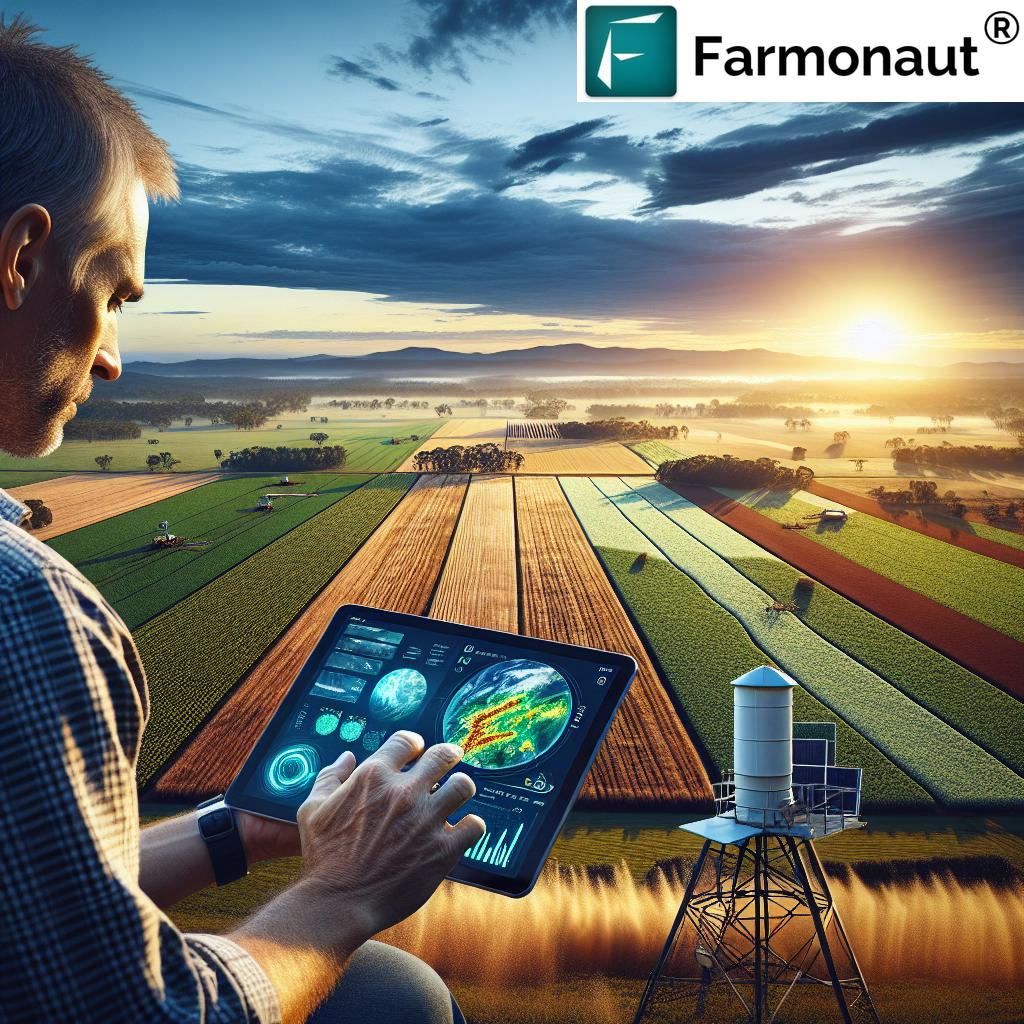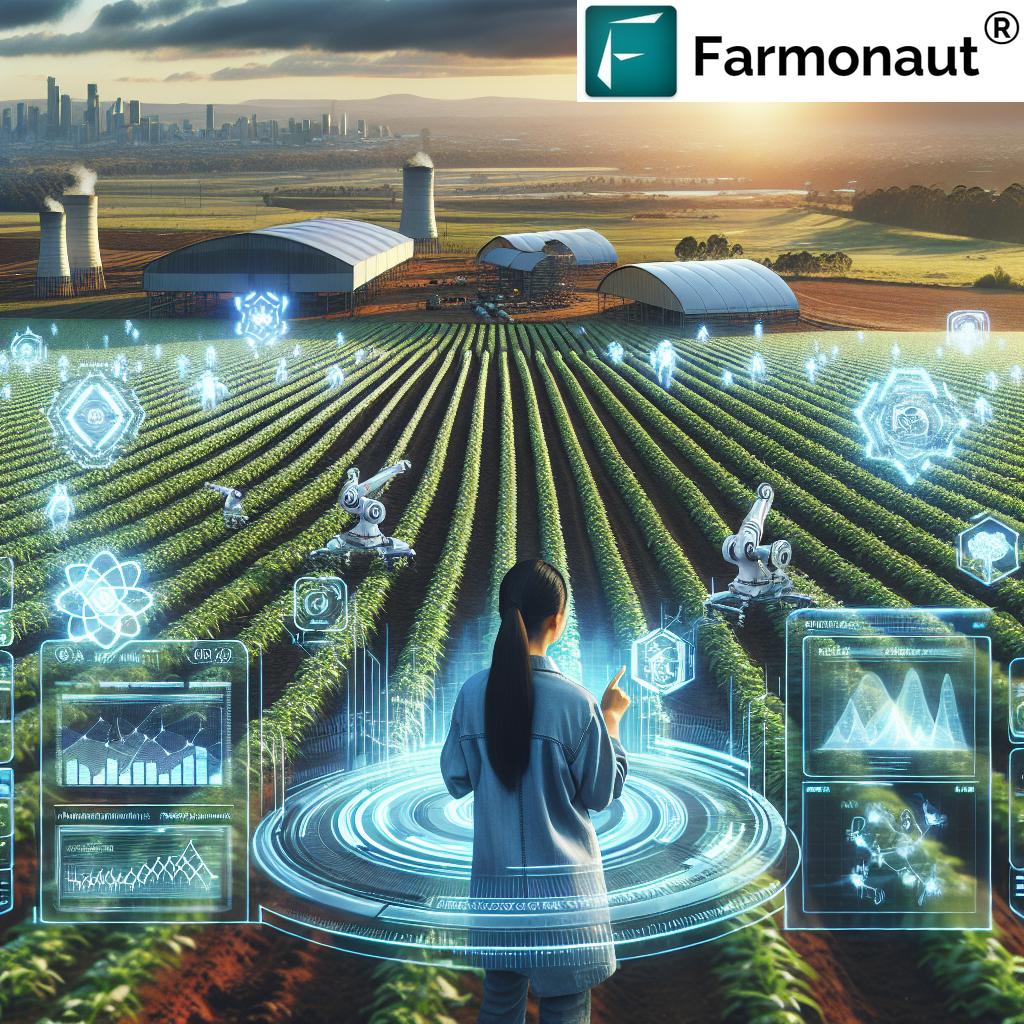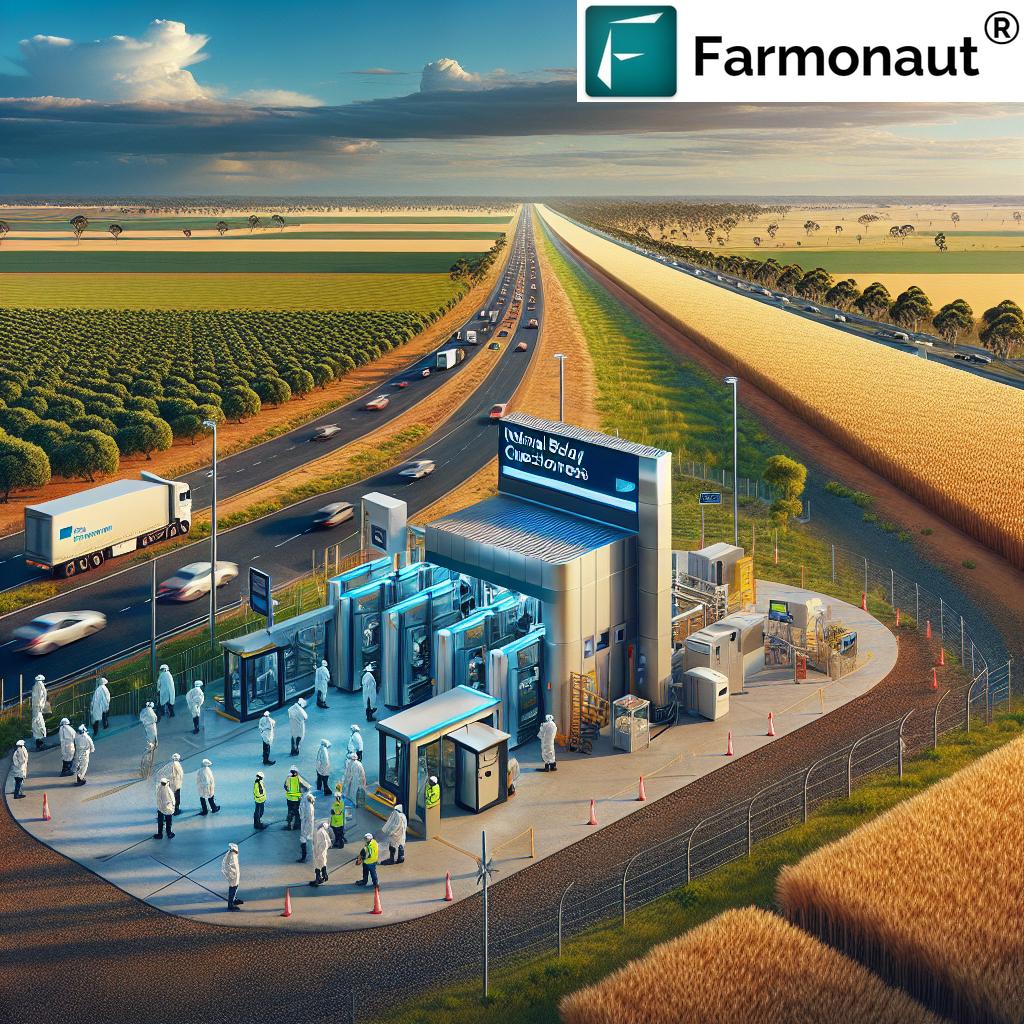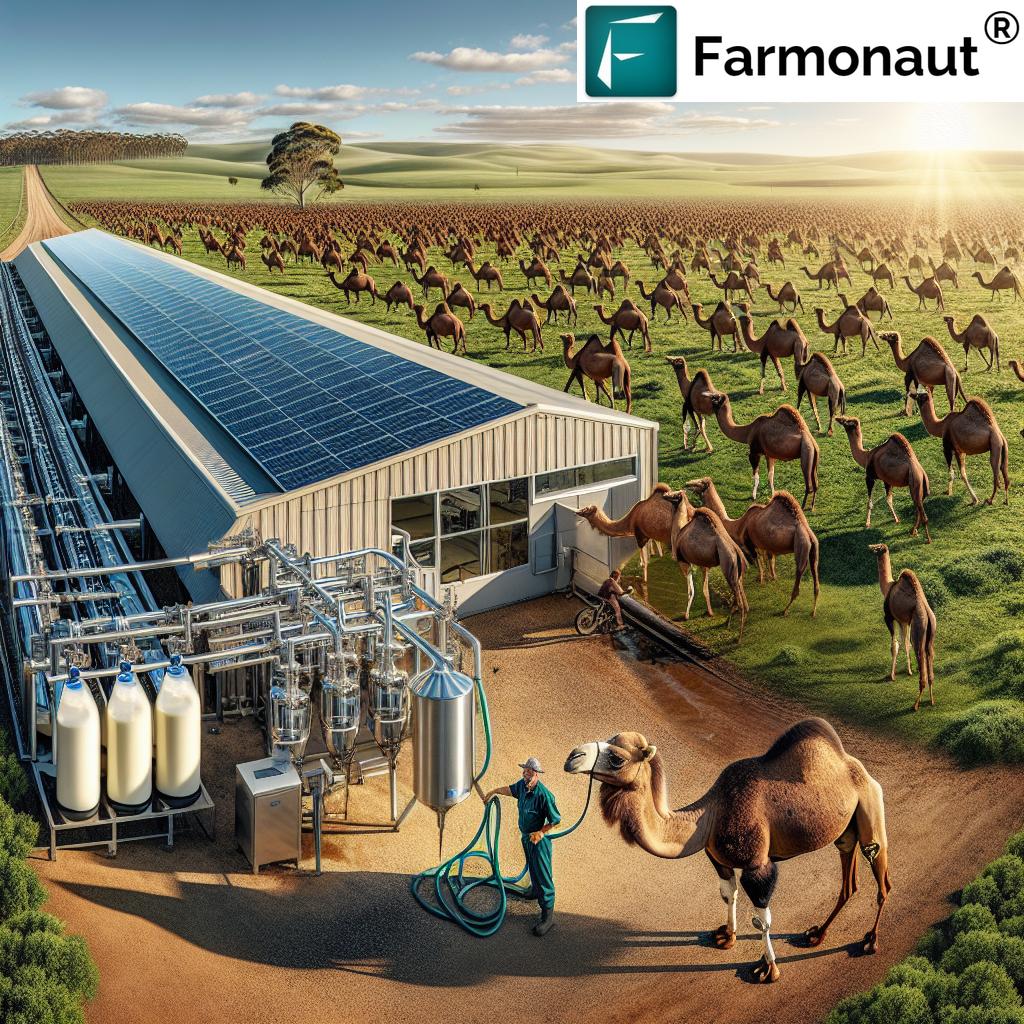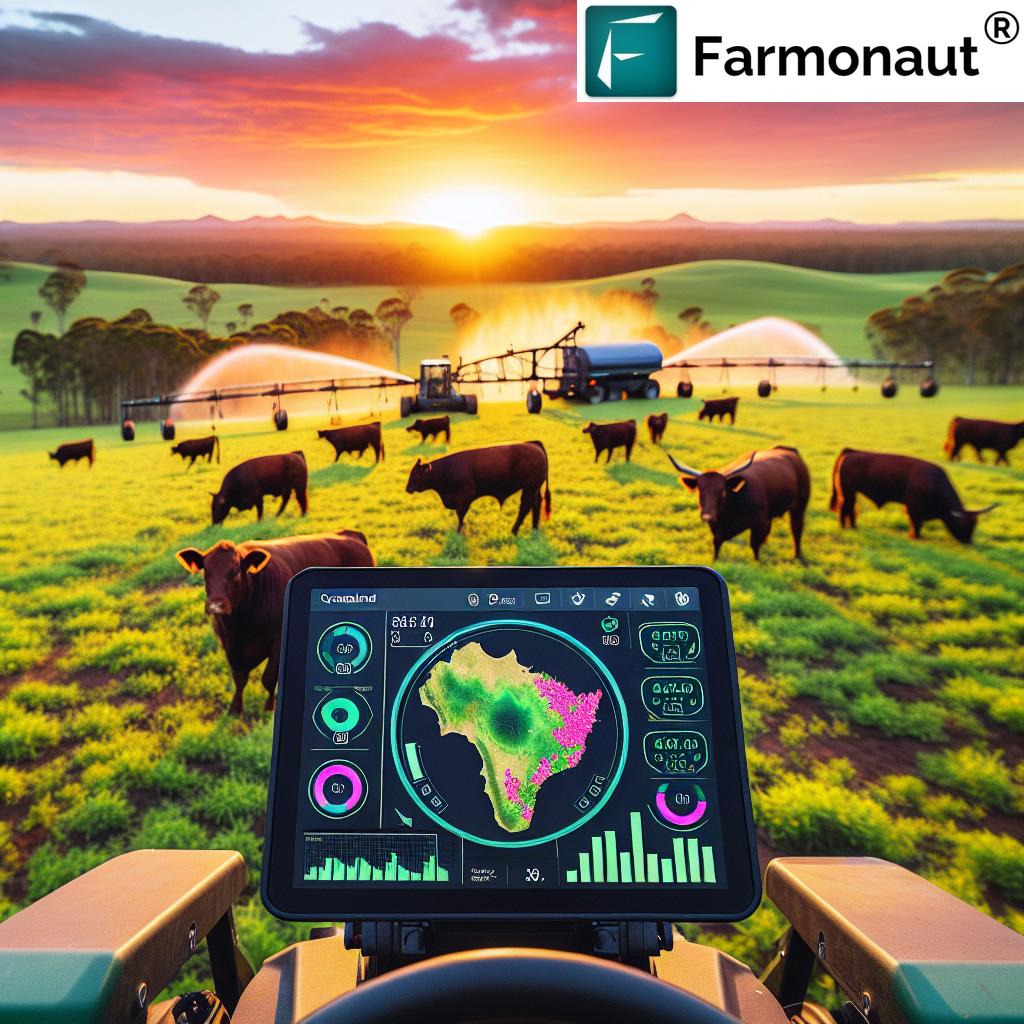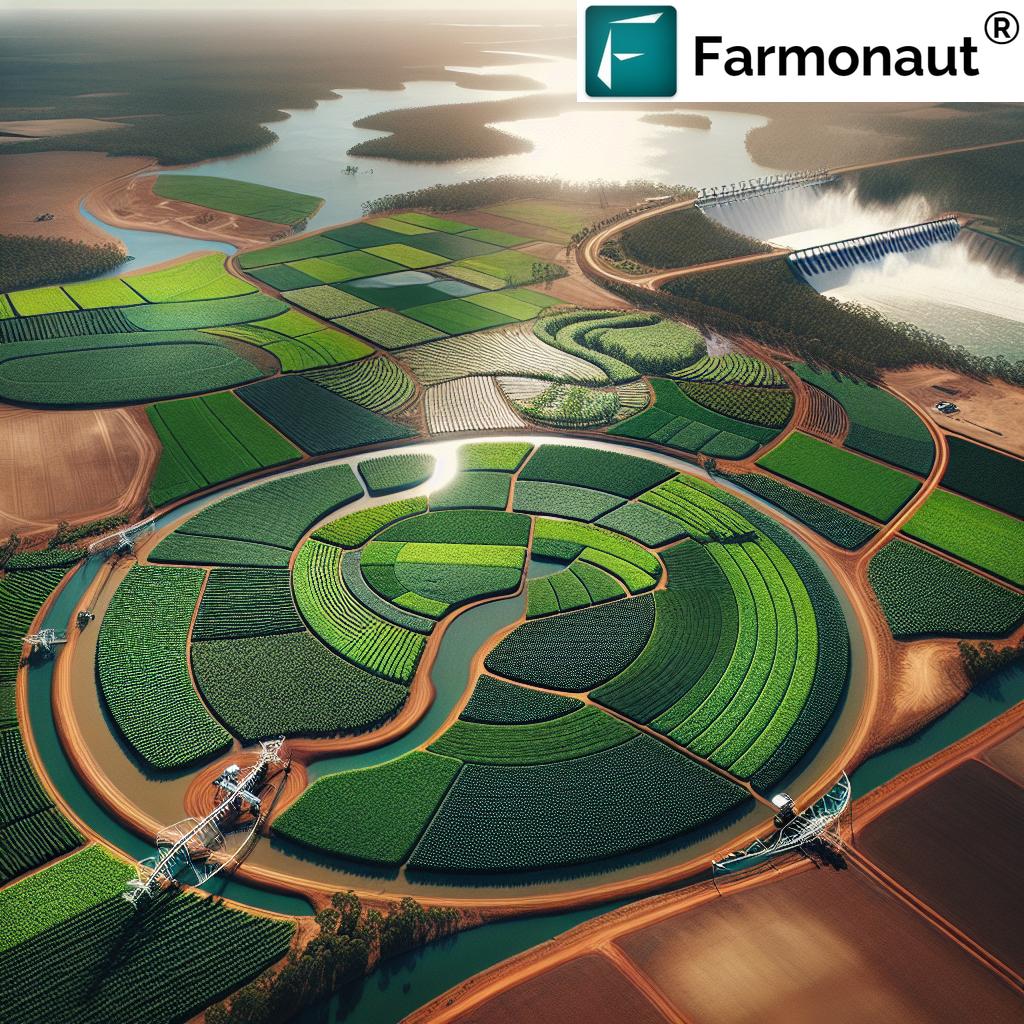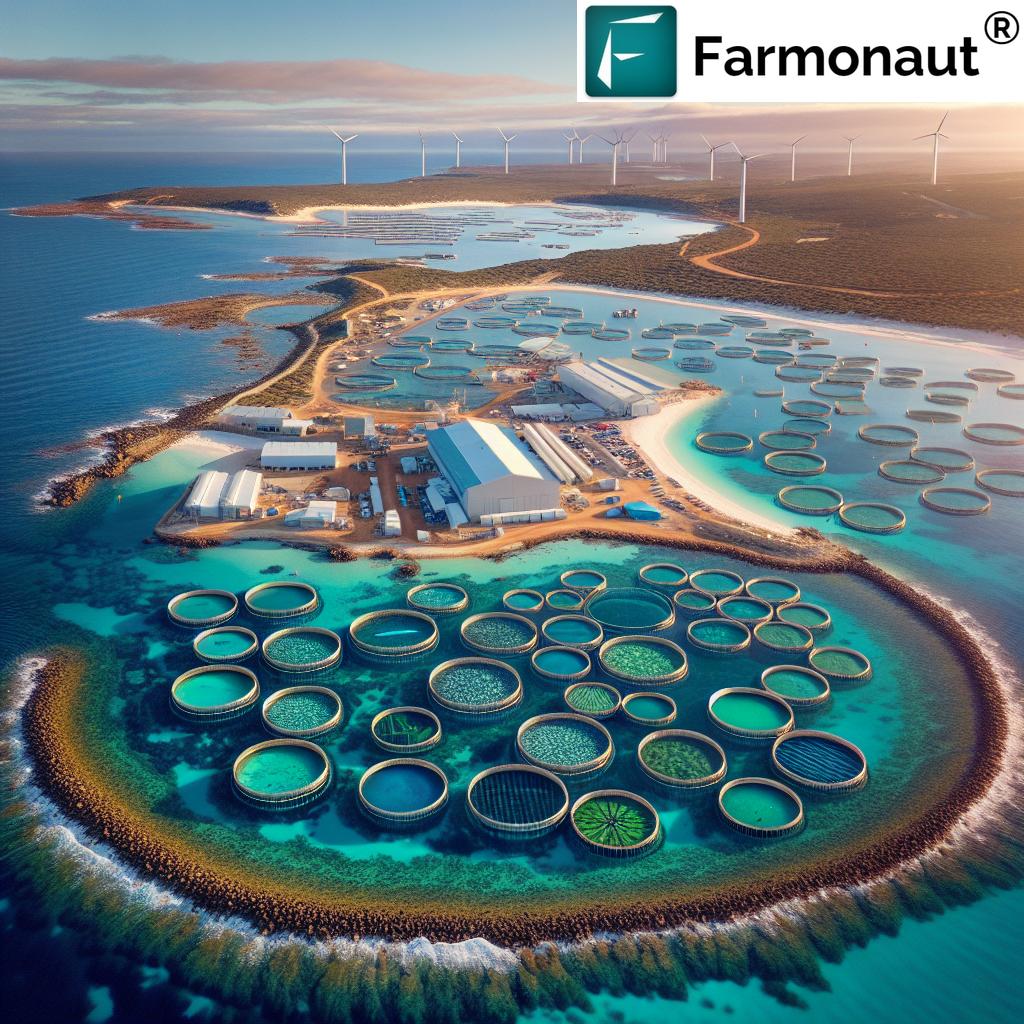Unlocking Australia’s Marine Potential: Sustainable Seaweed Cultivation for Natural Food Coloring Innovation
“Australia’s seaweed cultivation project aims to extract phycoerythrin, a valuable pigment, from native red seaweeds for natural food coloring.”
In the vast expanse of Australia’s coastal waters lies an untapped potential that could revolutionize the agricultural industry and propel the nation into a new era of sustainable innovation. We are witnessing the dawn of a groundbreaking initiative that combines the power of marine agriculture with cutting-edge technology to address the growing demand for natural food coloring. This blog post delves into the exciting world of sustainable seaweed cultivation and its transformative impact on Australia’s emerging industries.
The Rise of Natural Food Coloring
As consumers become increasingly conscious of what goes into their food, the demand for natural ingredients has skyrocketed. Among these, natural food coloring has gained significant attention, with manufacturers scrambling to find sustainable and efficient sources. Enter the humble seaweed – a marine powerhouse that’s about to take center stage in Australia’s agricultural landscape.
The focus of this innovative research is on extracting phycoerythrin, a valuable pigment found in native red seaweeds. This natural compound not only provides a vibrant color palette for food products but also aligns perfectly with the growing trend towards plant-based protein innovations. By harnessing the potential of these marine plants, we’re not just creating a new industry; we’re paving the way for a more sustainable and environmentally friendly approach to food production.
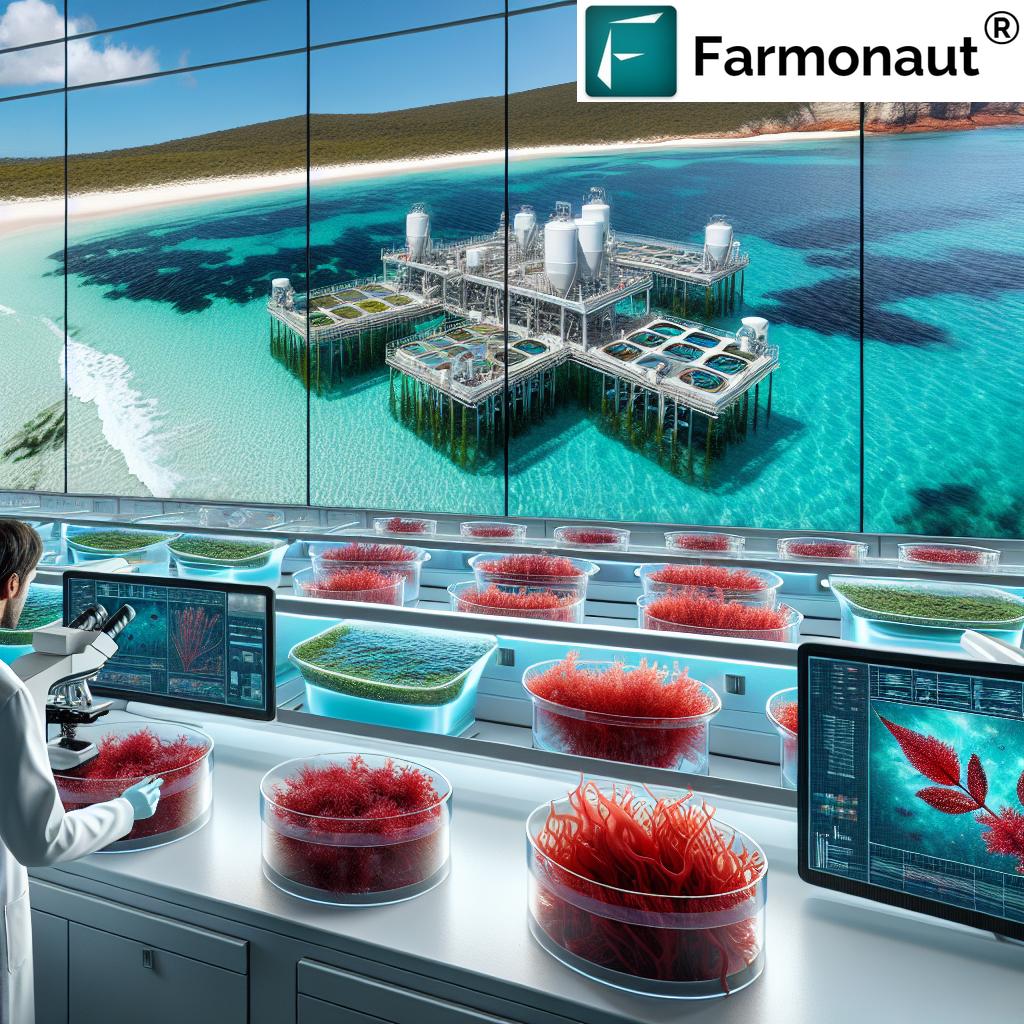
Exploring Cultivation Methods
The project is leaving no stone unturned in its quest to optimize seaweed cultivation for pigment production. Researchers are investigating both at-sea and land-based cultivation methods, each with its own set of advantages and challenges. This dual approach ensures that we can identify the most efficient and sustainable ways to grow seaweed for natural food coloring.
- At-Sea Cultivation: Utilizing Australia’s vast coastline, this method involves growing seaweeds directly in ocean waters. It offers the benefit of natural nutrient cycles and minimal land use.
- Land-Based Cultivation: Controlled environments on land allow for precise management of growth conditions, potentially leading to higher yields and more consistent pigment concentrations.
By exploring both options, the project aims to develop cultivation systems that maximize pigment production while maintaining sustainability. This comprehensive approach ensures that we can adapt to various environmental conditions and scale production to meet industry demands.
Analytical Techniques and High-Yield Species Identification
A crucial aspect of this research involves developing efficient analytical techniques to identify high-yield seaweed species. By understanding which native Australian seaweeds produce the highest concentrations of phycoerythrin, we can focus our cultivation efforts on the most promising candidates. This targeted approach not only improves efficiency but also ensures that we’re making the most of our natural resources.
The process of identifying high-yield species involves:
- Collecting samples of native red seaweeds from various coastal regions
- Analyzing pigment content using advanced spectroscopic techniques
- Assessing growth rates and environmental adaptability
- Evaluating the ease of pigment extraction and purification
Through this meticulous process, researchers are uncovering the hidden potential of Australia’s marine flora, laying the groundwork for a thriving seaweed cultivation industry.
Harnessing Marine Agriculture Technology
The success of this project hinges on the innovative use of marine agriculture technology. By leveraging cutting-edge tools and techniques, researchers are creating cultivation systems that not only maximize pigment production but also ensure sustainable practices. This technology-driven approach includes:
- Advanced monitoring systems to track seaweed growth and health
- Automated nutrient delivery for optimal growing conditions
- AI-powered data analysis to identify trends and improve cultivation strategies
- Sustainable harvesting techniques that minimize environmental impact
One of the key players in this technological revolution is Farmonaut, a pioneering agricultural technology company. Their advanced remote sensing technology can play a crucial role in monitoring seaweed biomass production, optimizing growth conditions, and enhancing overall agricultural productivity.
Farmonaut’s satellite-based crop health monitoring system, typically used for terrestrial agriculture, can be adapted to marine environments. This technology allows for real-time monitoring of seaweed farms, providing valuable insights into growth patterns, potential issues, and optimal harvesting times. By integrating this technology into seaweed cultivation, we can significantly enhance the efficiency and sustainability of the industry.
Pilot-Scale Process Development
Moving beyond the research phase, the project is also focused on developing a pilot-scale process for the extraction, purification, and stabilization of phycoerythrin. This crucial step bridges the gap between laboratory success and commercial viability, addressing key challenges such as:
- Scaling up extraction methods while maintaining pigment quality
- Developing efficient purification techniques to meet food-grade standards
- Ensuring the stability of the extracted pigments for long-term storage and use
- Optimizing the process for cost-effectiveness and environmental sustainability
By tackling these challenges head-on, the project is paving the way for the commercial production of natural food coloring from seaweed, opening up new opportunities for Australia’s agricultural sector.
“The initiative develops both at-sea and land-based cultivation methods, exploring efficient techniques to maximize pigment production from seaweed species.”
Impact on Australia’s Emerging Industries
The implications of this research extend far beyond the realm of food coloring. By fostering sustainable seaweed cultivation, we’re laying the foundation for a range of emerging industries in Australia. These include:
- Nutraceuticals and functional foods
- Biofuels and renewable energy
- Sustainable packaging materials
- Cosmetics and personal care products
- Agricultural fertilizers and soil amendments
The development of these industries not only diversifies Australia’s economic portfolio but also creates new job opportunities in rural and coastal communities. It’s a prime example of how innovation in agriculture can drive broader economic growth and sustainability.
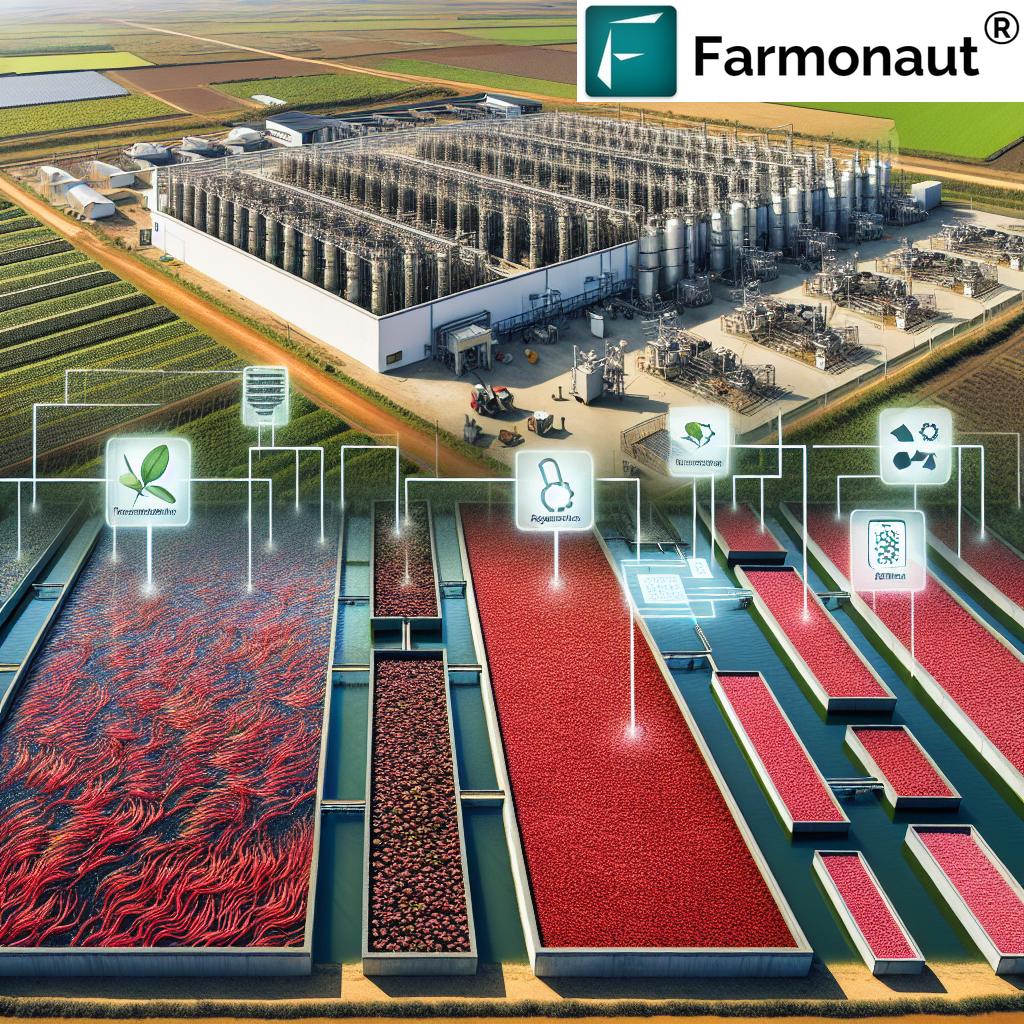
The Role of Remote Sensing in Seaweed Cultivation
Remote sensing technology, such as that provided by Farmonaut, plays a pivotal role in optimizing seaweed cultivation. By leveraging satellite imagery and advanced data analysis, we can:
- Monitor seaweed biomass production over large areas
- Identify optimal locations for seaweed farms based on water conditions
- Detect early signs of disease or environmental stress
- Predict harvest times for maximum pigment yield
This technology not only enhances productivity but also contributes to the overall sustainability of the industry by enabling more efficient resource management.
Sustainable Practices and Environmental Considerations
At the heart of this innovative project is a commitment to sustainability. Seaweed cultivation offers numerous environmental benefits, including:
- Carbon sequestration, helping to mitigate climate change
- Improvement of water quality through nutrient absorption
- Creation of habitats for marine biodiversity
- Reduction of ocean acidification
By developing sustainable cultivation practices, we’re not just creating a new industry; we’re actively contributing to the health of our oceans and the planet as a whole.
Learn more about Farmonaut’s API for advanced agricultural data
Challenges and Future Directions
While the potential of sustainable seaweed cultivation for natural food coloring is immense, there are challenges that need to be addressed:
- Scaling up production while maintaining quality and sustainability
- Navigating regulatory frameworks for new food ingredients
- Developing efficient processing and supply chain systems
- Educating consumers about the benefits of seaweed-derived pigments
Overcoming these challenges will require continued investment in research and development, as well as collaboration between scientists, industry partners, and policymakers. The future directions of this project may include:
- Exploring additional seaweed species for diverse pigment profiles
- Developing novel applications for seaweed-derived compounds
- Integrating seaweed cultivation with other forms of aquaculture
- Expanding into international markets for natural food coloring
Comparison of Seaweed Cultivation Methods for Natural Food Coloring
| Cultivation Method | Estimated Yield (kg/hectare/year) | Phycoerythrin Content (%) | Environmental Impact | Initial Setup Costs (AUD) | Operational Costs (AUD/year) | Scalability | Remote Sensing Applicability |
|---|---|---|---|---|---|---|---|
| At-Sea (Gracilaria) | 15,000 – 25,000 | 0.5 – 1.5 | Low | 50,000 – 100,000 | 20,000 – 40,000 | High | High |
| Land-Based (Porphyra) | 10,000 – 20,000 | 1.0 – 2.0 | Medium | 100,000 – 200,000 | 30,000 – 60,000 | Medium | Medium |
| At-Sea (Kappaphycus) | 20,000 – 30,000 | 0.3 – 0.8 | Low | 40,000 – 80,000 | 15,000 – 35,000 | High | High |
This table provides a comprehensive overview of different seaweed cultivation methods, highlighting the trade-offs between yield, costs, and environmental impact. It’s clear that while at-sea cultivation generally offers higher scalability and lower costs, land-based methods may provide better control over phycoerythrin content. The high applicability of remote sensing to at-sea cultivation underscores the potential for technologies like Farmonaut’s to significantly enhance the efficiency of these operations.
The Role of Technology in Advancing Seaweed Cultivation
As we continue to explore the potential of seaweed cultivation for natural food coloring, technology plays an increasingly crucial role. Farmonaut’s advanced agricultural solutions can be adapted to support this emerging industry in several ways:
- Precision Monitoring: Satellite-based crop health monitoring can be applied to seaweed farms, providing real-time data on growth patterns and environmental conditions.
- AI-Driven Insights: Machine learning algorithms can analyze vast amounts of data to optimize cultivation practices and predict optimal harvesting times.
- Resource Management: Advanced tools for fleet and resource management can streamline operations in seaweed farming, reducing costs and improving efficiency.
- Sustainability Tracking: Carbon footprinting features can help seaweed farms monitor and reduce their environmental impact, ensuring the industry remains sustainable as it grows.
Explore Farmonaut’s API Developer Docs for integration possibilities
By leveraging these technological advancements, we can accelerate the development of Australia’s seaweed cultivation industry, ensuring it remains at the forefront of innovation in natural food coloring production.
Economic Impact and Market Potential
The development of a sustainable seaweed cultivation industry for natural food coloring has significant economic implications for Australia:
- Creation of new job opportunities in coastal and rural communities
- Diversification of Australia’s agricultural exports
- Potential for high-value products in the global natural food ingredients market
- Spin-off industries in biotechnology and marine resource utilization
As the global demand for natural food coloring continues to rise, Australia is well-positioned to become a leading supplier, leveraging its vast coastline and innovative agricultural practices.
Fostering Innovation and Research
The success of this project hinges on continued investment in research and development. By fostering a culture of innovation, we can:
- Attract top talent to Australia’s marine agriculture sector
- Develop new technologies specifically tailored to seaweed cultivation
- Collaborate with international partners to share knowledge and best practices
- Create a robust ecosystem of startups and research institutions focused on marine resources
This commitment to innovation ensures that Australia remains at the cutting edge of sustainable agriculture and natural food production.
Community Engagement and Education
As we embark on this exciting journey of sustainable seaweed cultivation, it’s crucial to engage with local communities and educate the public about its benefits. This includes:
- Outreach programs to coastal communities about the potential of seaweed farming
- Partnerships with educational institutions to develop relevant curricula
- Public awareness campaigns about the benefits of natural food coloring
- Collaboration with Indigenous communities to incorporate traditional knowledge
By involving the community in this innovative project, we can ensure widespread support and create a sense of shared ownership in Australia’s marine agricultural future.
Conclusion: A Sustainable Future for Australia’s Marine Agriculture
The sustainable cultivation of seaweed for natural food coloring represents a significant leap forward in Australia’s agricultural landscape. By combining innovative research, cutting-edge technology, and a commitment to sustainability, we’re not just creating a new industry – we’re shaping the future of food production.
As we continue to unlock the potential of Australia’s marine resources, projects like this serve as a beacon of innovation, demonstrating how we can harness nature’s bounty in a responsible and sustainable manner. The journey ahead is filled with challenges, but also with immense opportunities for growth, sustainability, and economic prosperity.
With continued investment in research, technology, and community engagement, Australia is poised to become a global leader in sustainable marine agriculture. The success of this seaweed cultivation project for natural food coloring is just the beginning of a new era in Australian innovation, one that promises to nourish both people and planet for generations to come.
FAQ Section
Q1: What is phycoerythrin, and why is it important for natural food coloring?
Phycoerythrin is a red protein-pigment complex found in red algae and some cyanobacteria. It’s crucial for natural food coloring because it provides a vibrant, stable red hue without the use of synthetic additives, meeting the growing consumer demand for natural ingredients in food products.
Q2: How does seaweed cultivation contribute to environmental sustainability?
Seaweed cultivation contributes to environmental sustainability by sequestering carbon, improving water quality through nutrient absorption, creating habitats for marine biodiversity, and potentially reducing ocean acidification. It’s a low-impact form of agriculture that doesn’t require freshwater or fertilizers.
Q3: What role does remote sensing play in seaweed cultivation?
Remote sensing, such as the technology provided by Farmonaut, plays a crucial role in optimizing seaweed cultivation. It allows for monitoring of seaweed biomass production, identification of optimal farming locations, early detection of environmental stresses, and prediction of harvest times, all of which contribute to improved efficiency and sustainability.
Q4: How might this project impact Australia’s economy?
This project has the potential to significantly impact Australia’s economy by creating new job opportunities in coastal and rural areas, diversifying agricultural exports, tapping into the growing global market for natural food ingredients, and fostering innovation in marine biotechnology and related industries.
Q5: What are the main challenges in scaling up seaweed cultivation for natural food coloring?
The main challenges include maintaining quality and sustainability while scaling up production, navigating regulatory frameworks for new food ingredients, developing efficient processing and supply chain systems, and educating consumers about the benefits of seaweed-derived pigments. Overcoming these challenges requires ongoing research, investment, and collaboration across various sectors.





